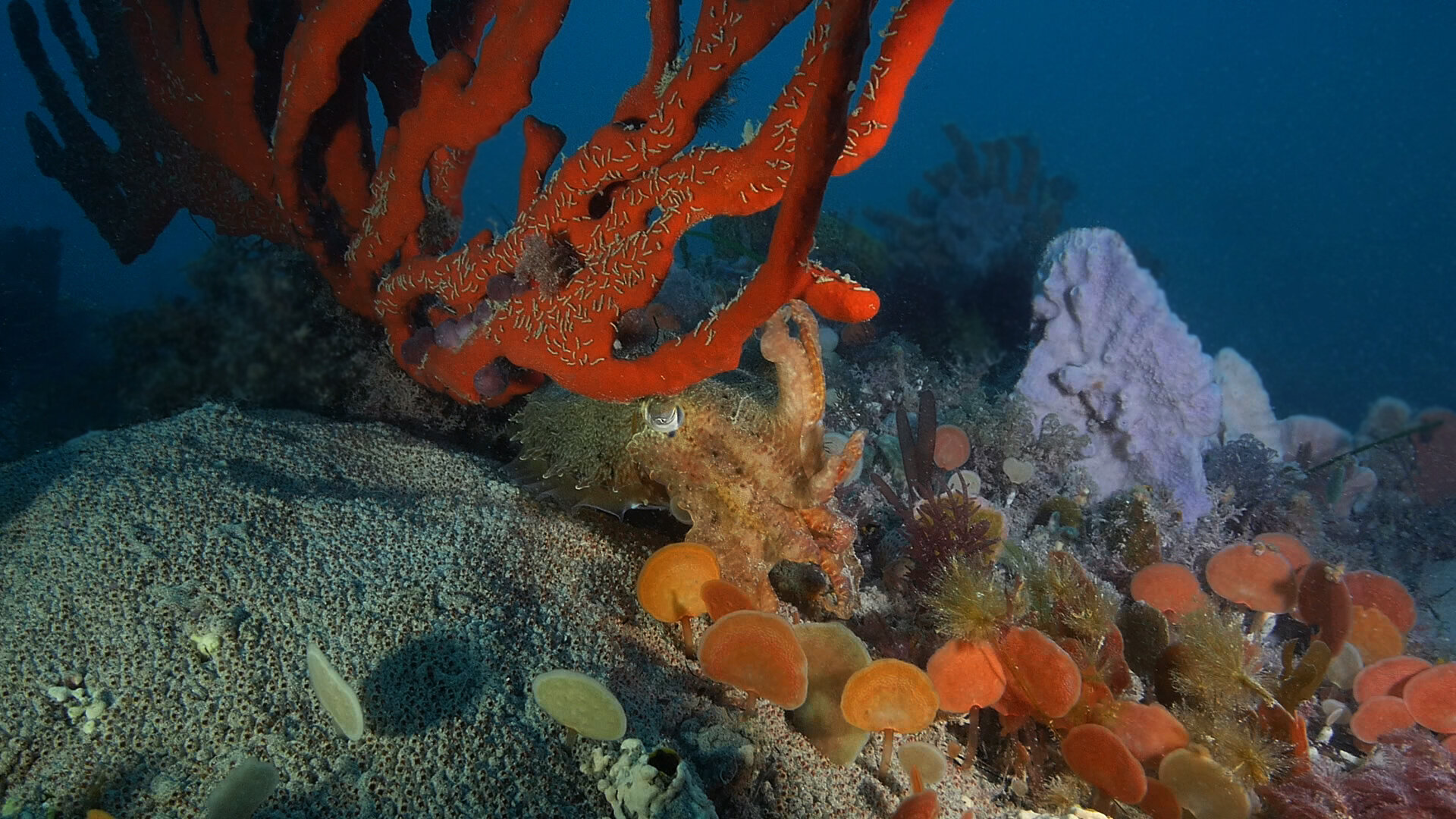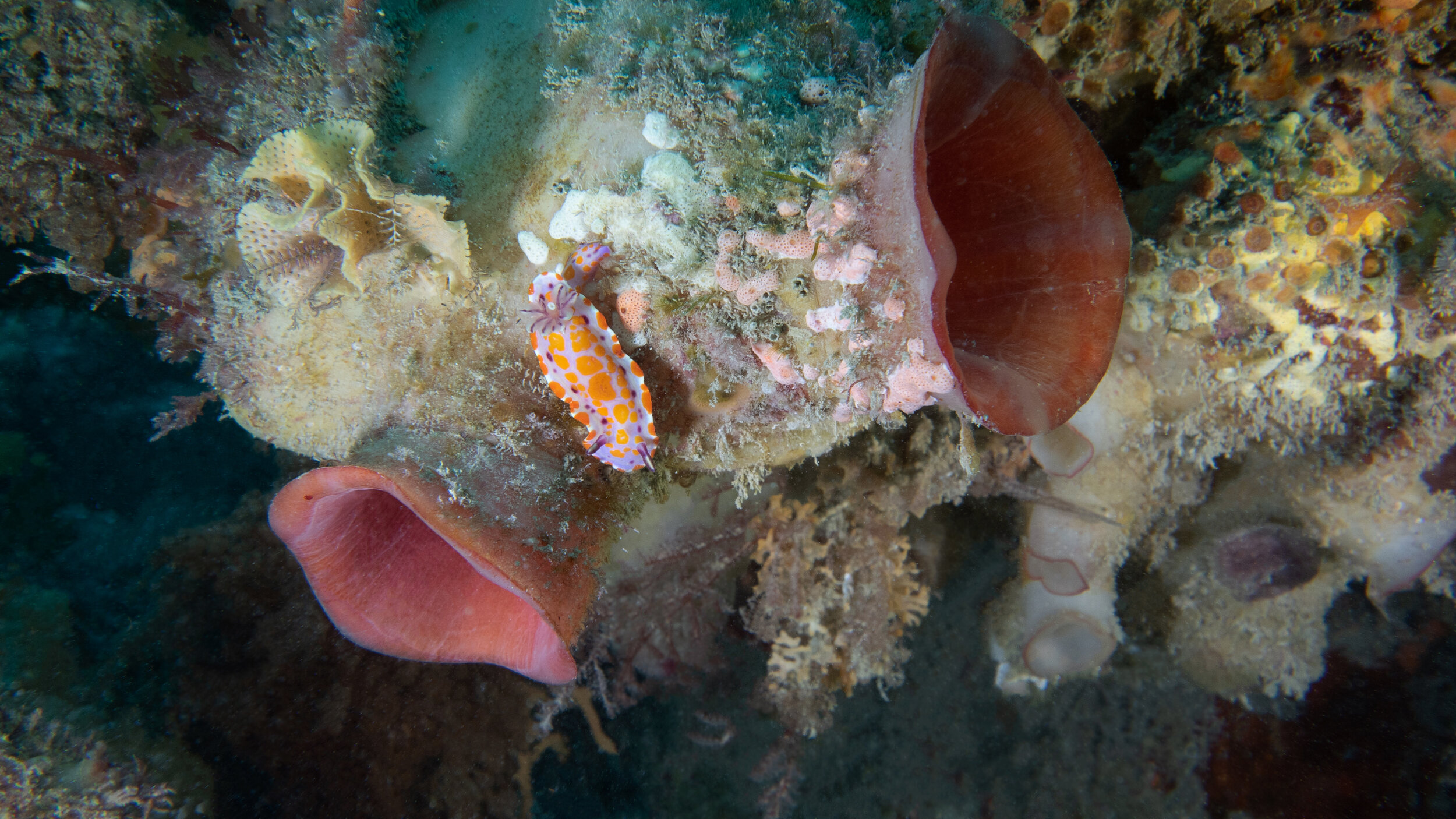A Journey into the
Mesophotic Zone
Beyond the sunlit shallows of Australia's Great Southern Reef lies a world less known, less understood, and infinitely fascinating. These deep water mesophotic habitats, often referred to as the "sponge gardens", are unknown places that marine scientists are only beginning to understand.
Sponge gardens are made up of beautiful soft branching corals, sponges and other invertebrates like sea tulips. These gardens support biodiversity by providing habitat structures akin to coral reefs where marine wildlife can find shelter, food or a place to breed.
Mystery of uncharted depths
The coastline of WA is a highly unique environment that supports one of the highest proportions of marine endemic species in the world.
PhD candidate Jack Parker, is at the forefront of investigating these reefs. Having grown up in Western Australia’s southwest, Parker has always had a deep fascination with endemic species and their conservation.
For Parker, however, the greatest fascination lay in the mystery of the uncharted depths "I've always been pulled to deeper water Ecosystems," Parker shares, highlighting his pathway to exploring the lesser-known deep waters of the Great Southern Reef.
The mesmerising mesophotic
Parker’s work involves meticulous studies of mesophotic reef ecosystems. These unique ecosystems, found at depths of 40 to 150 metres, are rich repositories of rarely-seen biodiversity, hosting an array of life forms adapted to low-light conditions. Particularly abundant is the presence of a myriad sponge species, which is where these ‘sponge garden’ habitats get their name.
"Extremely understudied compared to shallow environments."
Remote operated vehicles (ROVs) are used to perform transects of reefs up to 75 metres deep. Sponge gardens are most commonly found between 40 and 70 metres deep, where low light levels provide optimal conditions for their unique adaptations. The team use a BlueROV2 made by Blue Robotics and a SRV-8 by Oceanbotics to complete the surveys.
"These areas are extremely understudied compared to easy to access shallow environments," Parker points out. Through his research, Parker aims to map these habitats, understanding their biodiversity and how they function as potential refuges in a changing world.
Discovering Deep Water Kelp
Among the surprises uncovered by Parker and his team is the discovery of kelp, specifically the golden kelp (ecklonia radiata) in these deeper waters, a finding that challenges our traditional understanding of kelp habitats, which are normally found in shallower depths.
“I’ve definitely seen it [kelp] quite deep. You get patches, you have your sponge gardens and all your soft corals down there and then there will be a patch of Ecklonia down there as well. We have seen kelp down to about 60 metres," he notes, an observation that adds a new layer to the complexity of these deep reef ecosystems and their role in supporting diverse marine life.
The Fascinating Foxfish Wrasse
Throughout his deep water deployments, Parker has encountered a variety of species that call these mesophotic reefs home, including the captivating foxfish wrasse (Bodianus frenchii). The foxfish wrasse is endemic to the Great Southern Reef, most commonly spotted off the southwestern coastline of WA from Esperance to Augusta.
With a lifespan exceeding 80 years, “They're one of the oldest wrasses there is and they often inhabit these deep water environments " Jack reveals, underscoring the importance of understanding and protecting these critical environments.
Climate Refuges of the Deep
One of the most compelling aspects of Parker’s research is the concept of deep water habitats acting as climate refuges.
As ocean temperatures rise, some species may be forced to migrate to cooler waters, while others may not be able to adapt quickly enough and could face extinction. Water temperatures on mesophotic reefs are more stable than in shallow waters, which may help protect species from extreme temperature changes associated with climate change. As a result, some species may be able to use mesophotic reefs as a refuge to avoid the negative effects of warming surface waters.
"Shallower water warms up quicker than the deeper water environments.”
Parker explains “so if a species is finding their normal shallow habitat too warm, they could either move further south towards the poles where it's cooler, or they can move deeper where it's also cooler at depth as well.”
Influential Guidance
Parker's academic journey has been shaped by the mentorship of key figures guiding him through the intricacies of ecological research in deep water environments. Both his primary supervisor at Curtin University, Euan Harvey, and his secondary supervisor, Ben Saunders, have been instrumental in developing Parker’s analytical skills and fostering critical thinking to his research. From these mentors, Parker has learned the importance of meticulous data analysis, the need for rigorous fieldwork preparation, and the value of persistent curiosity. Reflecting on the essential lessons he's received, Parker emphasised, "Always ask questions. Always look for the small details."
The Ultimate Goal: Understanding for Protection
Parker’s deeper reef research has been funded by both the Holsworth Wildlife Research Endowment and JTSI (WA Department of Jobs, Tourism, Science and Innovation) as part of the research project ‘Advancing predictions of WA Marine Heatwaves and impacts on marine ecosystems’. This research into deeper reefs is just one part of an even larger project that has been running since 2006, researching temperate reef communities in the south-west corner of Australia, in particular the change in fish assemblages over time in response to large-scale disturbance events, such as marine heatwaves.
The main driver of Parker’s research is to provide a baseline understanding to these deeper water reefs that can help monitor changes and inform management and conservation efforts. The insights gained from his work are crucial in painting a fuller picture of the Great Southern Reef's expansive biodiversity-supporting habitat, particularly the lesser-known deep water habitats.
Despite the achievements made by Parker and his team, vast expanses of the Great Southern Reef's sponge gardens remain unexplored. The significance of these habitats, both as biodiversity hotspots and potential climate refuges, cannot be overstated. The ongoing research into these deep water habitats is a crucial endeavour for understanding and preserving the unique marine life of the Great Southern Reef.















